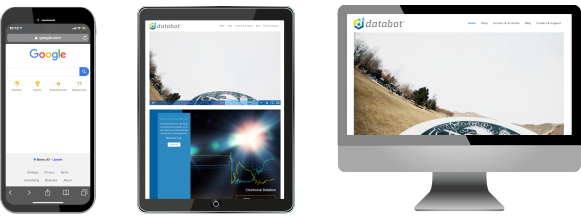Wow, you came off the blocks like a rocket!
Since you came off the blocks like a rocket in PDQ 1 and 2, are you ready for a bigger bite? Next stop, the Experiment!

PDQ2 |
A Peek Under the IDE Hood
Grades:
Time:
Subject:
5-7
5-15 minutes
Computer Science, Electronics
This PDQ provides a quick and easy peek at some sample Arduino Code. Have no fear – it’s simple and clear!
Arduino is both an Open Source hardware AND software platform that enables creators, inventors, students and just about anyone to learn basic electronics and coding to make projects. The FREE software for programming your Arduino hardware is called Arduino IDE. IDE stands for Integrated Development Environment. The IDE is available for computers running Windows, MacOS, and LINUX. Let’s take a look!
Understand & Recognize:

The activities in this module only require you to have some kind of Internet connected device and a browser! Chromebook, smart phone, supercomputer – whatever you have on hand to search the Internet is all you need!
Open Source: A model of sharing inventions and information for others to use, improve and share again.
Hardware: The”physical” part of a computer or device. If you can thump it on a table, it’s probably hardware.
Software: The computer program or “instructions you write” for the hardware. It’s not something you can thump on the table, but the hardware is worthless without it.
Sketch: A “sketch” in Arduino lingo refers to a computer program you’ve written in the IDE to run your Arduino hardware.
Code: The actual lines of instruction in your computer program (sketch) are code. Code is written in different languages such as Arduino. Code is also a verb – “I’m going to code for a few hours – see you later!”
Arduino IDE: IDE stands for Integrated Development Environment which is a mouthful, but it just means you have all the tools you need to write fun instructions for your Arduino microcontroller to follow.
Input: Things that go “into” a computing system are input. When you type on your phone you are “inputting” information.
Output: Something that come out of. your computing system, like the display on a smartphone, is “output.”
Read Overview and watch video.
This image is an actual screen capture from the Arduino IDE. Look for the following in the screen cap to help you understand the Arduino IDE!
What you are looking at is an Arduino sketch. It is an example of software that provides your Arduino hardware with a set of instructions to follow. The instructions are written in code. This code is written in the Arduino programming language.
Since you came off the blocks like a rocket in PDQ 1 and 2, are you ready for a bigger bite? Next stop, the Experiment!
Educator Info
There are a number of misconceptions about programming and coding that you can begin to address with this simple activity. Here are three:
 Intro to Arduino by Robert O. Grover & Team databot™ is licensed under a Creative Commons Attribution 4.0 International License. Permissions beyond the scope of this license may be available at databot.us.com/contact.
Intro to Arduino by Robert O. Grover & Team databot™ is licensed under a Creative Commons Attribution 4.0 International License. Permissions beyond the scope of this license may be available at databot.us.com/contact.
![]()